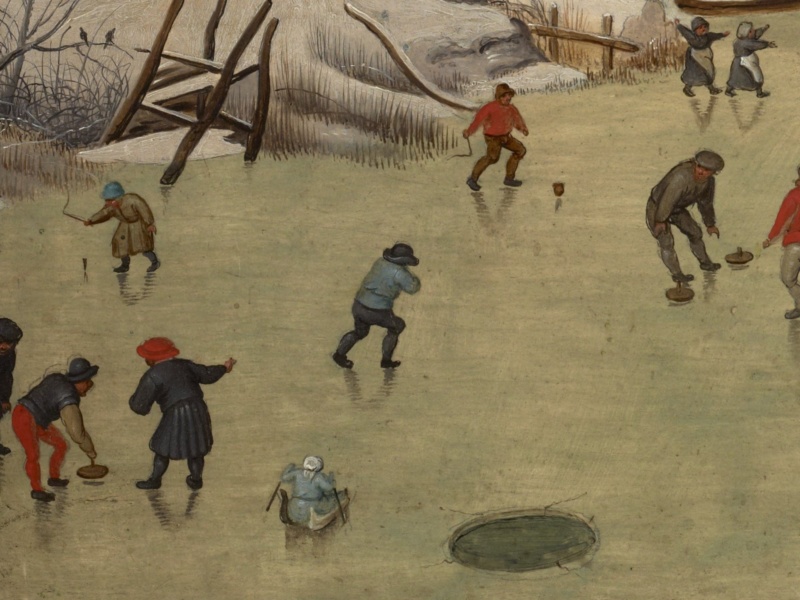Curling is a great winter sport played on ice by men and women. It existed in Scotland in the early 16th century and, today, is very popular in Canada, Sweden, France and the USA. It has been one of the Winter Olympic sports since 1998, although its first appearance was in 1924. With two teams of four players, they take it in turns to glide 19 kg (44 lbs) polished granite stones across the ice to the circular “house”, a goal consisting of four concentric circles. Prior to the start of the game, the ice is sprayed with water so that tiny pebbles of ice form.
To begin play, one player delivers the stone from a gliding elongated lunge position and the others move ahead of the stone, sweeping vigorously to slightly warm the ice and influence its speed and trajectory. Players take it in turn to deliver two stones each. The stone closest to the ‘button’ of the house score the most points. As in croquet or bowls, players can knock the other team’s stone away from the button. The team with the highest points after 8-10 “ends” (or innings) wins.
Traditionally, curling was played on natural ice areas such as lakes, though today they are typically played in indoor ice centres. It is a sport gaining greater popularity with curling associations setting up in various countries.
Health benefits of curling include:
- Tones your legs and glutes Curling is great for toning your quads, calves and glutes. Alot of the time you'll be squatting on the ice, which does wonders for these muscles! Before the game, the warm up usually involves exercising and loosening up these muscles. The player throwing the stone adopts the position of an elongated lunge, which further builds strong legs.
- Strengthens your core Vigorously sweeping the ice ahead of the stone to remove the pebbles, and practising your curling moves is great for strengthening your core.
- Use your brain Strategy is a key factor in winning a curling game. You need to plan, think of your moves ahead and be responsive to the other team's moves. It has even been called "chess on ice"!
- Build social connection Curling is often undertaken in indoor ice centres. It's an interactive community where friendships build during and beyond the game itself.
- Boosts cardiovascular health Science shows that working out in the cold uses more energy, and all the walking back and forth means curling acts as a workout on ice. Moving backwards and forwards get the heart rate pumping, uses up lots of calories and boosts cardiovascular health. Curling has been shown to reduce high blood pressure.
- Improves your balance You need to maintain your balance while moving on ice, and this builds your physical coordination and core.
- Tones your shoulders and arms The heavy weight of the stone (19 kg or 44 lbs) being glided helps tone your upper body, shoulders and arms, when 'delivering'.
"It's not just a rock. It's forty-two pounds of polished granite, with a beveled underbelly and a handle a human being can hold. Okay, so in and of itself it looks like it has no practical purpose, but it's a repository of possibility. And, when it's handled just right, it exacts a kind of poetry - as close to poetry as I ever want to get. The way it moves... Not once, in everything I've done, have I ever felt the same wonder and humanity as when I'm playing the game of curling."
Look for curling venues and associations near you to get involved in this interesting sport.
